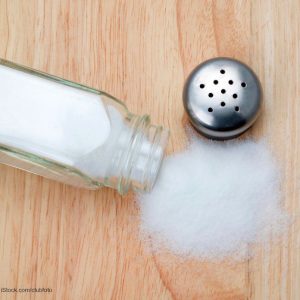The Centers for Disease Control and Prevention (CDC) wants restaurants to lower the sodium content of the foods they offer. The agency just issued a report called “From Menu to Mouth: Opportunities for Sodium Reduction in Restaurants”, which was published in CDC’s journal, Preventing Chronic Disease.
 Americans eat out, either at fast food or dine-in restaurants, four or five times a week. And just one of those meals can contain more than an entire day’s recommended amount of sodium for an adult, which is about 2,300 milligrams.
Americans eat out, either at fast food or dine-in restaurants, four or five times a week. And just one of those meals can contain more than an entire day’s recommended amount of sodium for an adult, which is about 2,300 milligrams.
On average, fast food meals have 1,848 mg of sodium per 1,000 calories. Foods served in dine-in restaurants have 2,090 mg of sodium per 1,000 calories. Foods obtained in restaurants contributed to 24.8% of the sodium consumed in this country during 2007 to 2008. The average sodium content of main entree menus items served by the top 400 restaurants in the U.S. was 1,512.
Too much sodium can cause high blood pressure, one of the leading causes of stroke and heart disease. In addition, high sodium levels can increase the risk of osteoporosis, stomach cancer, and kidney disease.
Dr. Tom Frieden, CDC Director, said in a statement, “the bottom line is that it’s both possible and life-saving to reduce sodium, and this can be done by reducing, replacing, and reformulating. When restaurants rethink how they prepare food and the ingredients they choose to use, healthier options become routine for customers.” [Editor’s note: I once worked in a restaurant kitchen for a day. The amount of salt I saw chefs pour into pots of food was simply appalling. They just upended the container and didn’t measure.]
To help reduce sodium in the foods they make, restaurants can enroll their chefs in menu certification programs, and train their staff about the risks of high sodium intact. Providing subject matter expertise, in the form of consulting a registered dietitian can also help. Local governments can enact zoning regulations, incentivizing sodium reduction and making restaurants provide nutrition information on menus. The menu labeling law affects restaurants with 20 or more locations. But independent restaurants have more flexibility with the types of food they serve, so may be more amenable to change.




